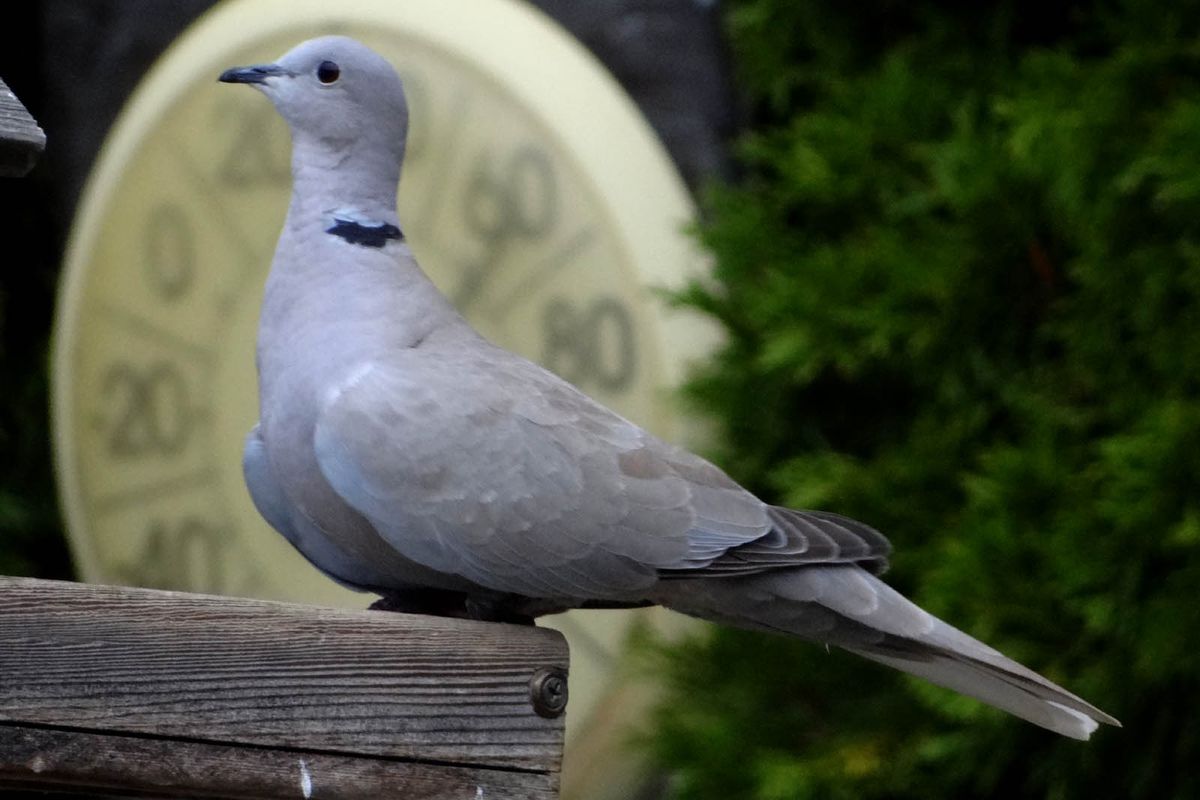Rich Landers: Verdict still out on non-native Eurasian collared-dove

Exotic species usually spell trouble for natives.
Lake trout illegally released in Yellowstone Lake crippled native cutthroat trout populations and raised havoc with the entire ecosystem, including the grizzly bears at the top of the food chain.
Invasive spotted knapweed, unpalatable to most livestock and wildlife, crowds out native forage essential to game such as elk.
But the jury is still out on the Eurasian collared-dove (ECD), a non-native species that’s taking North America by storm.
ECDs have infiltrated the North American landmass faster than any bird species on record.
Released from captivity in the Bahamas in 1974, they were confirmed in Miami in 1982, noted in Montana in 1997, in California in 2001 and in Idaho by 2005.
They reached Seattle by 2007 and were confirmed nesting in Alaska in 2009, having traversed the continent in a quarter century – half the time it took starlings and house sparrows to put down roots coast-to-coast in the late 1800s.
Development has given ECDs an advantage. Researchers have noted the species’ affinity for human-influenced landscapes such as road corridors, gardens, town parks, power lines, backyard bird feeders, grain elevators and small pastures.
“When considering the damage that starlings have done to crops and many native birds, I am concerned with the rapid spread of these new invaders,” said Mike Munts, a wildlife biologist and avid birder at the Little Pend Oreille National Wildlife Refuge southeast of Colville.
Also of concern is the competition the formerly distant relative might pose for the native mourning dove.
The starling and house sparrow, for example, aggressively take nesting sites from native species, kill their young and destroy their eggs.
But so far, research has not put a black hat on the ECD.
In 2006, a study published in the Journal of Wildlife Management found that ECDs do not significantly compete for food with mourning doves, at least in some parts of the country. However, the researchers acknowledged that could change if ECD populations continue to boom.
A 2010 study suggested that numbers of four other North America dove species increased with ECD abundance from 1999-2008.
Hunters are starting to tune in to the newcomer.
Washington declared the ECD a “predatory” species in 2008 and Idaho, Montana and other states have defined it as “unprotected.” The classifications allow the ECD to be hunted all year and bagged in any amounts by shooters with the appropriate state hunting licenses, provided they are in areas where it’s legal to hunt.
“I’m not sure hunting will reduce their numbers,” said Don Kraege, Washington Department of Fish and Wildlife migratory bird manager. “So far, they’ve been linked mostly to suburban areas rather than farms and other open areas where hunting can occur.”
Hunters who shoot ECDs should leave them unplucked until transported home for processing so they can be distinguished from mourning doves. During the September season, ECDs do not count toward the daily limit of mourning doves as long as they are identifiable.
“You can definitely pick them out in flight, but I would still urge caution if you are hunting them outside the (mourning dove) season,” said Jeff Knetter, Idaho Fish and Game upland game and waterfowl biologist in Boise.
ECDs are larger than mourning doves and slightly lighter in color, pale gray, with dark primary feathers.
In addition to the distinctive black collar on the back of its neck, the ECD has a squared tail tip as opposed to the pointed tail on a mourning dove.
ECDs like to perch on wires or other man-made structures. Their three-syllable call – “whoo-hoo, hoo” – is louder and a bit more monotonous than the mourning dove.
Hearing or seeing an ECD a decade ago was a novelty. Spokane birder Ron Dexter said they were first documented by local birders at grain elevators in nearby small towns and have been nesting around Spokane for at least seven years.
“I am beginning to see flocks of them just about anywhere there are people and buildings,” he said.
Mature spruce trees are among their favorite spots to roost and nest.
If research continues to indicate the ECD is not adversely affecting native species, we may someday be able to embrace it.
Some introduced exotics, such as the ring-necked pheasant and Hungarian partridge, found a niche that let them become popular across the board and a boost to the economy without being invasive.
Could the ECD be a sportsman’s darling?
It’s less migratory, so the birds might be more available than mourning doves that pack their bags and fly out with the first foul weather in late summer.
ECDs are about 40 percent larger than mourning doves, so they have a meatier breast.
“They seem to be in just about every small community in North Idaho now,” Moscow birding expert Terry Gray said.
Experts agree the ECD is becoming a widespread, permanent fixture in the feeders, fields, trees and skies of North American.
“I think Eurasian collared-doves are very smart,” Gray said. “They seem to stay inside of towns where they cannot be hunted as if they know that when they stray outside the city limits they can be shot any time of the year.”
Contact Rich Landers at (509) 459-5508 or email richl@spokesman.com.